Look at any painting by Jenny Kroik and you’ll instantly be transported to another time and place…
A cold winter morning waiting in line for a latte, an evening stroll through the Met Cloisters or catching a phone call on the steps of the Natural History Museum. Each moment becomes beautiful and full of meaning under her gaze and artful hand—making you take a minute to appreciate the unexpected beauty of your own day-to-day. We caught up with Jenny in New York to chat about her favorite places to people watch and how being an immigrant has been a challenge that pushed her towards creating more.
Your work feels very “quintessential New York” to me. How has living in the city affected your style and your approach to art?
It has affected me a great deal. I lived in Oregon for 8 years, but I’m a city girl so moving to NYC felt like I was back to where I belong. Oregon was a great place for me for many reasons, but NYC has really given me a lot of what I needed to grow my practice. Mostly drawing material (with awesome, different people everywhere), but also the community. I get to see tons of lectures and exhibits of people I’ve admired for many years, and meet other illustrators who are constantly creating. It’s inspiring and it’s the push I needed to start working full steam!
I love the gentle voyeuristic quality to your work. I imagine anyone would be delighted to be captured by you, but do you always paint people you actually see?
Thank you! I do paint mostly from life. It’s not always accurate, but it’s how I see people. I do hope that people would be happy to see the painting (if they actually recognize themselves), I am always nervous that they won’t like it.
I love it when I paint a stranger for fun and they “find” themselves on my Instagram and get really excited—a few times I’ve even made new friends that way! Sometimes, if the art is for a paid job, I invent people by “borrowing” a nose here, an outfit there or I’ll invent something new altogether. I try to modify it enough so it doesn’t resemble anyone specific; I don’t want to “use” anyone if it’s to promote a product or something. I want the “real” people I paint to be their own message, those pieces are about the specific person or a specific moment in time, so it’s on the less “commercial” side of art and more fun and spontaneous.
What are some of your favorite observations from watching people at museums?
People become very self-aware in museums. I think sometimes they project whatever mood they are in onto the paintings, so you often see very emotional expressions. Other times people are just bored. I also love it when people dress up for a museum, it’s like they are going to visit someone very important and they want to impress them. This happens especially in shows about fashion—you get all the fashion people who come wearing amazing outfits and then it’s party time for me.
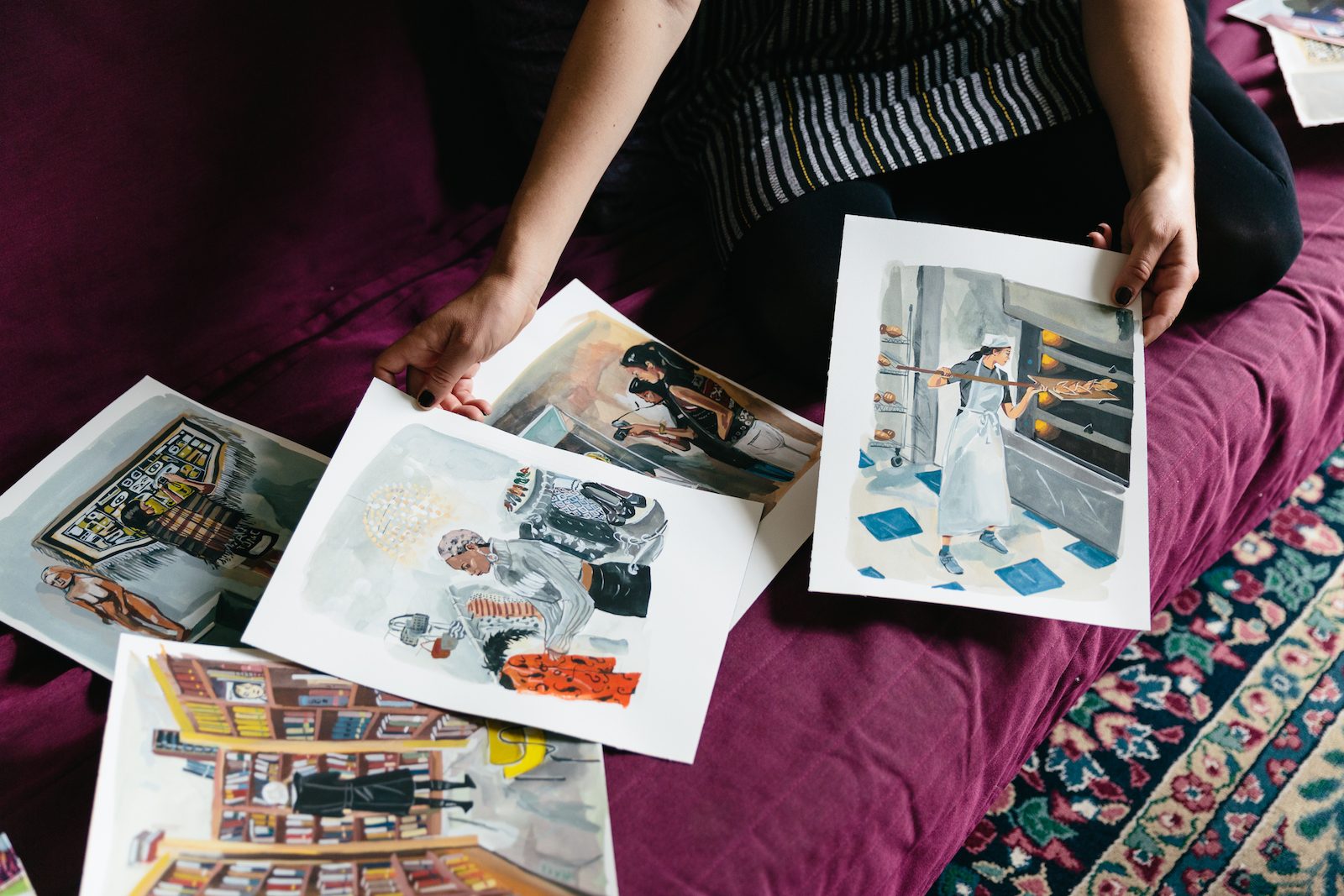
Tell us about your process.
I work very fast, it takes me about 1-3 hours to make a painting. (If I didn’t stop to go online every 15.. who am I kidding, 5 minutes, I might paint even faster). I try to make a painting a day so I have lists of themes, ideas and references stored away for later use etc. and I refer to that when I need something new. I usually know what I want to do next, it’s like a consecutive story that I’ve been telling over a long period of time.
The best paintings are the ones that appear in my head fully complete before I’ve even started. I’ll see someone and I’ll connect them to something else and it’ll just feel like a good idea. Some days I’ll just smear paint and make something and it will feel heavy and blah, but I think it’s important to practice every day. You can’t sit and wait for inspiration or for something or someone else to inspire you. When you work every day, sometimes everything aligns: your mood, good reference and idea, energy level (something!) and a nice painting comes out. Painting every day puts you in the right place and the right time when things align in your benefit. But, it’s also good to listen to yourself when you feel you need a little break for the sake of obtaining a healthy perspective—the equivalent of stepping back from the canvas, looking back at all the stuff you’ve painted in order to figure out what to do next.
I read that you were born in St. Petersburg, Russia—how has being an immigrant affected your experience as an artist?
I was born in Russia and moved to Israel when I was 5. So I actually immigrated twice. I don’t remember a lot from the first immigration except that I know my parents had to bribe a lot of people and they were only allowed to leave with $50 in cash. I’ve spent a lot of my life trying to fit in and hide being different, when I had to immigrate at 18 to the U.S., I felt very frustrated that I’ll have to start over and learn to pretend again.
Being an immigrant is very difficult, I still feel like I’ve erased a part of myself. Switching languages is weird. Sometimes I translate something funny that someone says to me into Hebrew in my head and I FEEL the humor more with my body and laugh more naturally (if that makes any sense). This is another reason I like NYC, half of the city is Russian or Israeli or Russian-Israeli, so there’s nothing special or strange about being from somewhere else and you get to use all your languages often.
The thing about my experience as an immigrant that helps my work, is this feeling of being a perpetual tourist, an outsider. I can walk around and marvel at mundane things, an alien from the planet Kroikon.
Incidentally, a part of Mindfulness is trying to have a “Beginner’s Mind”—trying to see things as if you’ve never seen them before. As a teacher, I try to explain this to students because it’s something everyone struggles with. After you’ve painted a million faces, how can you still get excited about painting a face? It’s easy to get excited about things when you start, but for a sustainable practice you have to find renewed interest in the world and in your motivation to capture it, and you have to do it every day over and over again. So if you’re a perpetual alien, then things are always new and strange and interesting.
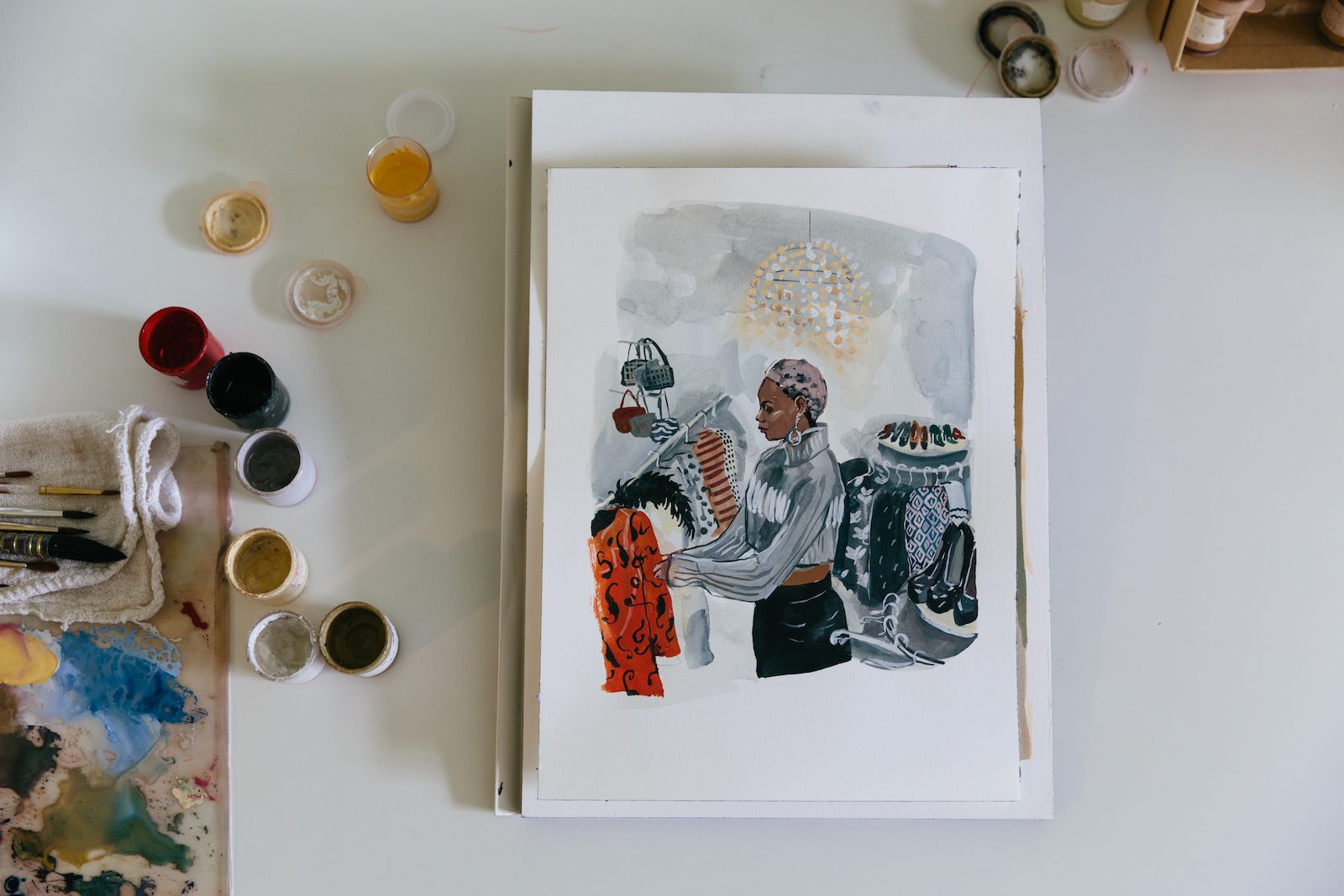
How incredible it must be to see your work on the cover of the New Yorker! Can you tell me a bit about how that came about and how you approached the commission?
It really was incredible! I think I still don’t quite believe that it actually happened. When I moved to NYC in 2016, I decided to go full force into my illustration career after a some 7 years of hiatus (graduate school, teaching, and experimenting with other mediums and more “academic” art). I finally decided that illustration was my true passion and that I would send my work everywhere and see what happened. I also started asking for help and advice from people, for example I emailed my then-online friend Gayle Kabaker (we’ve met a few times since then) after she got a New Yorker cover and asked for advice; she was super generous and kind and helped me a lot. Many other fellow artists and friends were very kind and huge help. They encouraged me to continue sending my work everywhere, so I did. When I started sending ideas to the New Yorker, I never really expected a reply, but one day I got a response, saying they liked a painting I sent them and wanted to use it! A few months later, they picked a second idea—I was super grateful for the opportunity!
In terms of the commission, I actually sent finished paintings. For both covers, the chosen art required some tweaks—the clothing changed as the weather did and other little edited details, but the idea stayed pretty similar to the original painting. I was always too scared to paint over the original painting (envisioning me spilling my dirty painting water over the whole thing) so I would print out the painting on watercolor paper and paint over that, scan it, and then montage it over the original art.
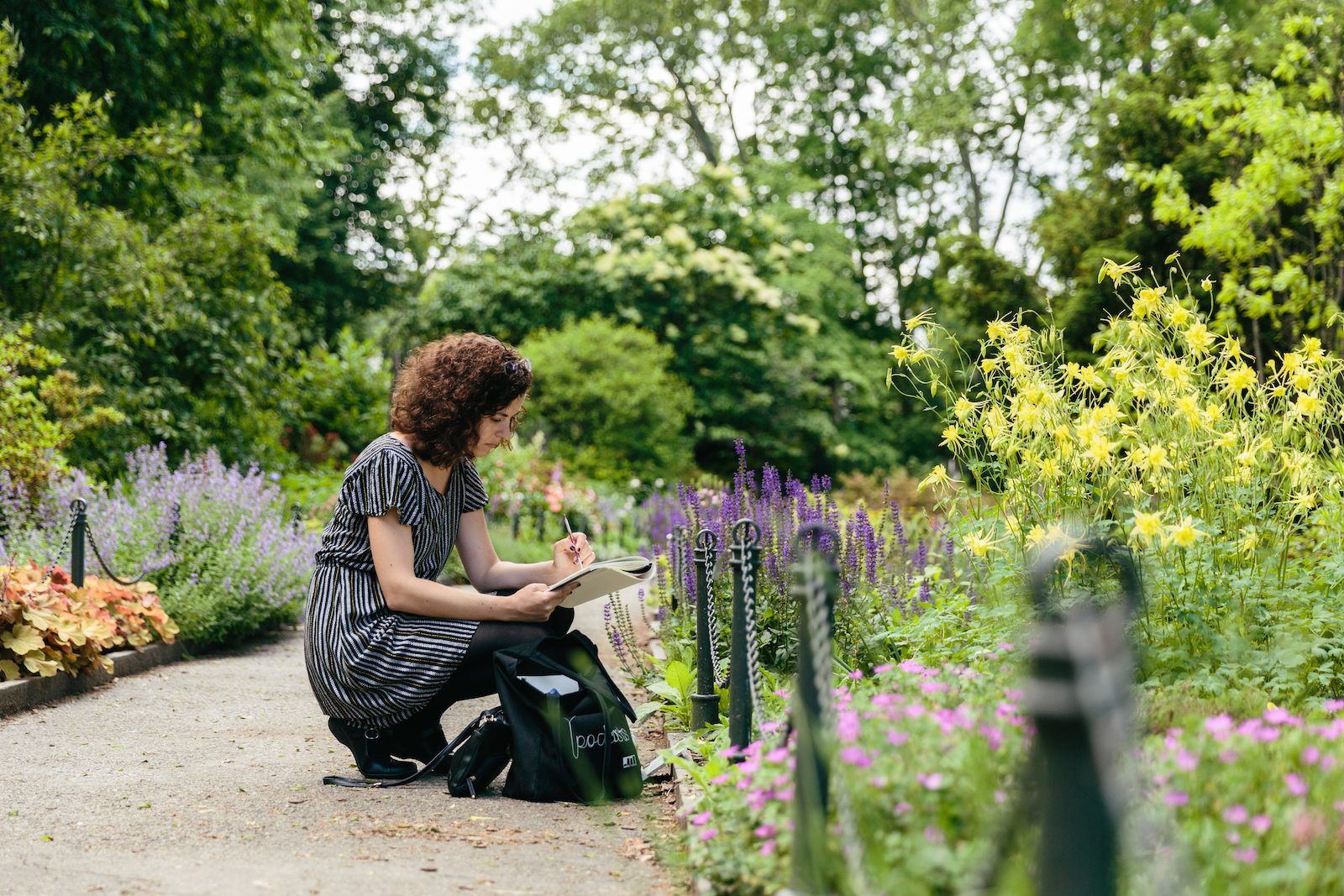
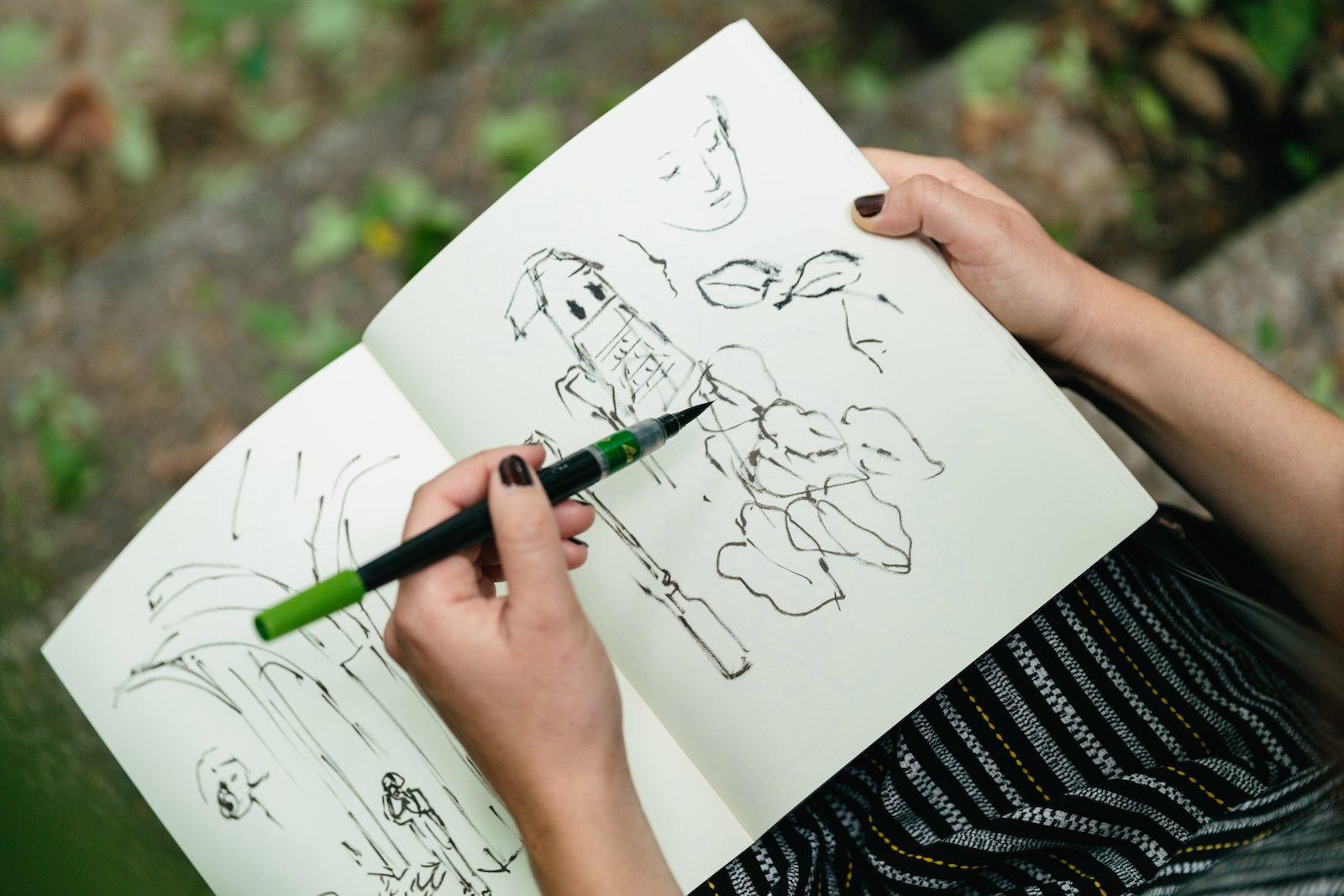
I recently read a book about how looking at paintings can be a mindfulness tool because they perfectly capture a specific moment in time. Do you think about this at all when you paint? Your pieces are very “present”.
It’s funny you ask, because I’m very big into mindful meditation! I struggled with anxiety a lot in my life and learning to meditate probably saved my art practice. Painting requires sitting with your thoughts, and when they overwhelm and scream at you, it’s very hard to focus. Learning to sit with thoughts, trying to look at them objectively and not react, is probably one of the most important things I’ve learned in my life.
I think a lot about focus, trying not to clutter the composition and instead, being mindful of everything that happens on the paper and how I feel about it. So hopefully it comes through to the viewer! I think it would be fantastic if people who see my paintings have a mindful moment.
What are your favorite museums in NY?
My favorite museum is the Metropolitan Museum, all the branches—the main one, the Cloisters and the Met Breuer. I could go there every day. But I love all the museums, I love that each one feels so different. Sometime I’m in a MoMa mood or a Jewish Museum mood. Sometimes I need to see the portraits at the Frick Collection. There is always some great exhibit somewhere in the city and I try to go often and patronize as many museums as I can. There are still so many that I haven’t seen!
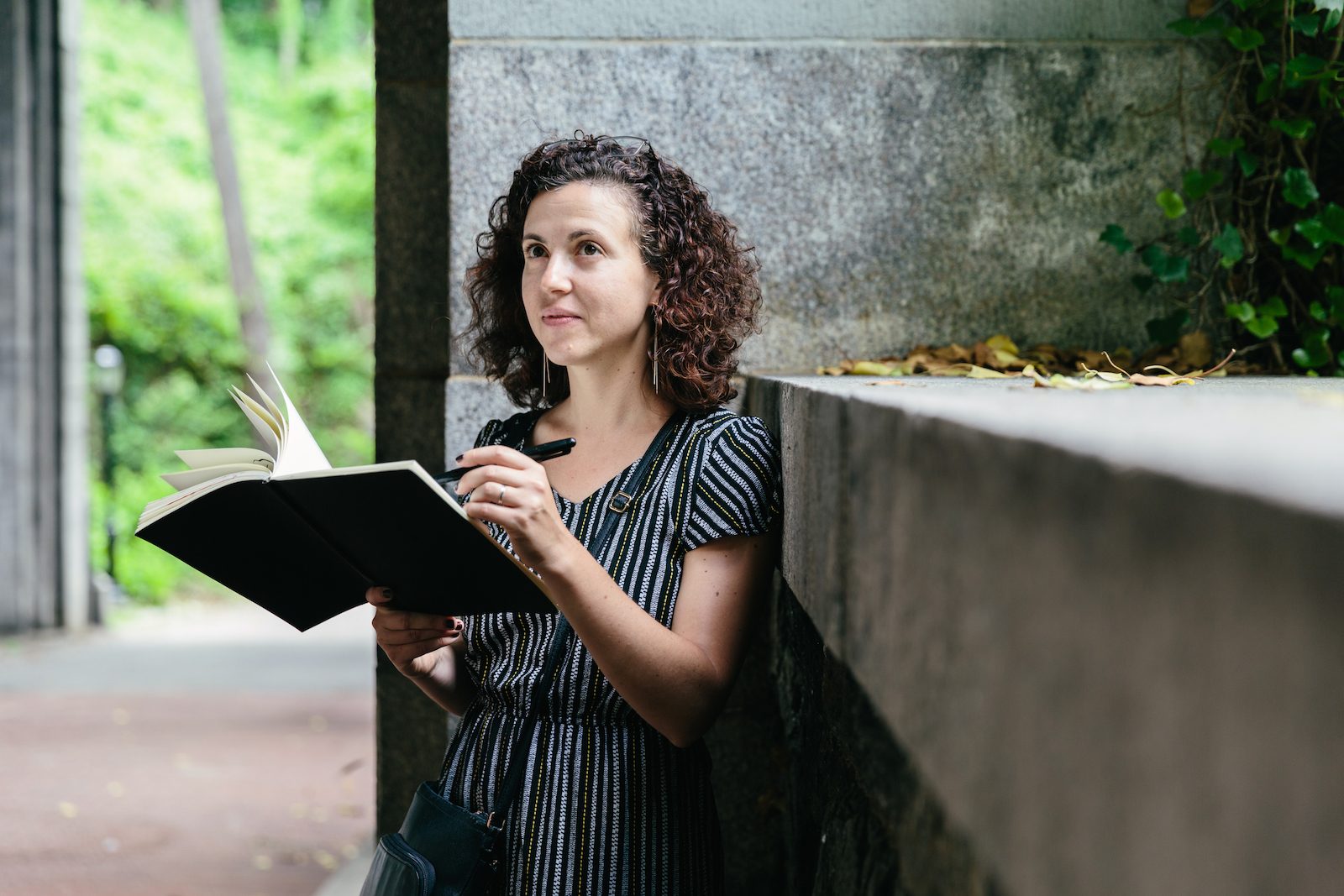
Photos by Julia Robbs
Comments